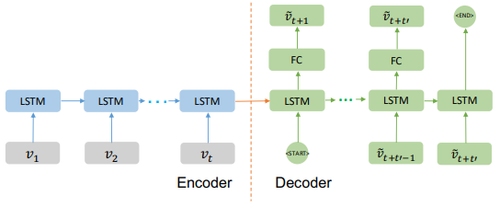2018 DeepSequenceLearningwithAuxilia
- (Liao et al., 2018) ⇒ Binbing Liao, Jingqing Zhang, Chao Wu, Douglas McIlwraith, Tong Chen, Shengwen Yang, Yike Guo, and Fei Wu. (2018). “Deep Sequence Learning with Auxiliary Information for Traffic Prediction.” In: Proceedings of the 24th ACM SIGKDD International Conference on Knowledge Discovery & Data Mining. ISBN:978-1-4503-5552-0 doi:10.1145/3219819.3219895
Subject Headings: Neural Sequence Learning Task, Sequence-to-Sequence Learning Task.
Notes
Cited By
- http://scholar.google.com/scholar?q=%222018%22+Deep+Sequence+Learning+with+Auxiliary+Information+for+Traffic+Prediction
- http://dl.acm.org/citation.cfm?id=3219819.3219895&preflayout=flat#citedby
Quotes
Abstract
Predicting traffic conditions from online route queries is a challenging task as there are many complicated interactions over the roads and crowds involved. In this paper, we intend to improve traffic prediction by appropriate integration of three kinds of implicit but essential factors encoded in auxiliary information. We do this within an encoder-decoder sequence learning framework that integrates the following data: 1) offline geographical and social attributes. For example, the geographical structure of roads or public social events such as national celebrations; 2) road intersection information. In general, traffic congestion occurs at major junctions; 3) online crowd queries. For example, when many online queries issued for the same destination due to a public performance, the traffic around the destination will potentially become heavier at this location after a while. Qualitative and quantitative experiments on a real-world dataset from Baidu have demonstrated the effectiveness of our framework.
Content
…
... In this paper, we effectively utilise three kinds of auxiliary information in an encoder-decoder sequence to sequence (Seq2Seq) [7, 32] learning manner as follows: a wide linear model is used to encode the interactions among geographical and social attributes, a graph convolution neural network is used to learn the spatial correlation of road segments, and the query impact is quantified and encoded to learn the potential influence of online crowd queries(...)
Figure 4 shows the architecture of the Seq2Seq model for traffic prediction. The encoder embeds the input traffic speed sequence [math]\displaystyle{ \{v_1,v_2, \cdots, v_t \} }[/math] and the final hidden state of the encoder is fed into the decoder, which learns to predict the future traffic speed [math]\displaystyle{ \{\tilde{v}_{t+1},\tilde{v}_{t+2}, \cdots,\tilde{v}_{t+t'} \} }[/math]. Hybrid model that integrates the auxiliary information will be proposed based on the Seq2Seq model.
Figure 4: Seq2Seq: The Sequence to Sequence model predicts future traffic speed [math]\displaystyle{ \{\tilde{v}_{t+1},\tilde{v}_{t+2}, \cdots ,\tilde{v}_{t+t'} \} }[/math], given the previous traffic speed [math]\displaystyle{ {v_1,v_2, ...v_t } }[/math].
…
Figures
References
;
| Author | volume | Date Value | title | type | journal | titleUrl | doi | note | year | |
|---|---|---|---|---|---|---|---|---|---|---|
| 2018 DeepSequenceLearningwithAuxilia | Fei Wu Binbing Liao Jingqing Zhang Chao Wu Douglas McIlwraith Tong Chen Shengwen Yang Yike Guo | Deep Sequence Learning with Auxiliary Information for Traffic Prediction | 10.1145/3219819.3219895 | 2018 |

